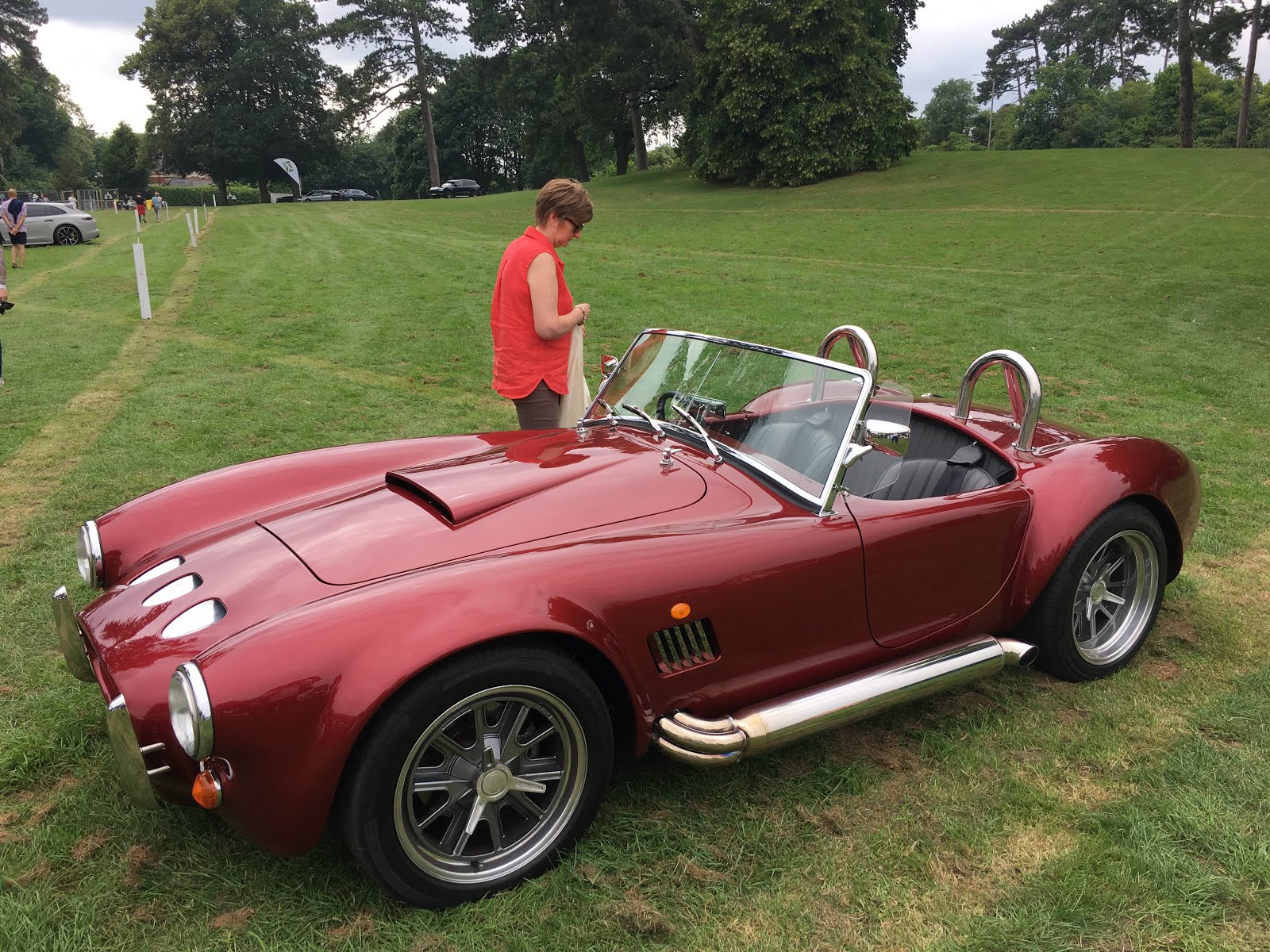A while since my last update, so if anyone thought I'd given up that's far from the case.
Reversing Light/Fog Light
I'm not planning on using a rear chrome bumper so needed the lamps to be fitted to the body. I quite like the inserted look that AK recommend, however if I'd have realised how much work is involved I'd have gone another route!
Cutting the holes out is not too bad with the Dremmel, however I found that I had to remove a small section of the boot floor in the process, else the lamps would be too low down on the valance.
I used S&J's lamps that needed modifying slightly to re-route the cable exit, and made up some blocks to fix the back of the lamp case to the chassis rail. Sounds easy but was a right pain. Once fitted, I fibreglassed the boot floor above the lamps to fill in the gap. The final issue is getting a neat finish around the lamp so several filling/sanding operations were needed to complete.
 |
| View from above showing the bit of the boot floor removed. |
 |
| Finished Item |
Battery Fit
I looked at a few battery trays but realised that the height of the battery meant that it really needed to sit on the boot floor else the -ve post was too close to the body to easily fit/remove the -ve terminal.
So I used a simple angle bracket as a backstop and a tie-down battery bracket from Halfords. The hooks just go through holes in the boot floor which I re-enforced with penny washers. In the final fit - I'll be sealing the holes with silicone to stop water ingress.
Dashboard wiring.
I decided that it would be a good idea to wire up the dash and column stalks with the dash untrimmed so that I could make sure all was well and working before sending the dash away to be covered. I know this means a strip down and redo job but just felt that I could iron out any issues before I have a finished part on my hands.
So for my dashboard design I played around with a some cut out templates to arrive at a suitable layout. I've not opted for a clock hence the four ancillary gauges
- Volts,
- Oil Pressure,
- Fuel
- Water Temp.
I've added a power socket and USB ports in the back of the glove box.
The switches are Savage type from CBS.
I've opted for
- Large Start Button
- Cooling Fan Override Switch ( in case fan doesn't cut in)
- Screen fan
- Hazard Warning
- Brake Test Switch
- Rear Fog Light
I haven't used the usual two lighting buttons as to me that looks a little clumsy so I've used a single rotary switch mounted above the ignition key and in the allowed projection area for IVA.
 |
| Mock up |
 |
| Acceptance test from the boss |
 |
| A really dusty job |
 |
| Pretty lights! |
Column Stalks.
I have a BMW E36 Indicator assembly - which as you might expect does not adhere to either the E30 or E34 wiring instructions in the manual.
This is the E34 wiring guide with notes around the differences with the E36..
Lights
BMW
Switch
AK Wiring Loom
Green/Yellow (Pin
10) Red/White Note – there are two Green/Yellow cables into Pin 10 on the E36
Yellow
Blue/Red
White
Blue/White
Indicators
BMW Switch
AK Wiring Loom
Green/Yellow(Pin
5)
Lt Brown/Lt
Green Note – no Green/Yellow in Pin 5 – looks like Grey/Red
Blue
Green/White
Grey
Green/Red
Advice from AK was to connect one of the Green/Yellow cables from Pin 10 to Lt Brown Lt Green connection.
What I discovered is that one of the green/yellow wires is for the lights and the other for the indicators. I got them the wrong way round at first and had the main beam flashing nicely in time with the indicators. My advice is to make these connections with bullet or spade connectors so you can easily swap over if you get it the wrong way round.
The Wiper stalk conforms exactly to the AK wiring manual. You have to make up the connector from the kit supplied but in my case the wipers and washers all worked first time.
Handbrake/Low Brake Fluid Level
I'm using a Savage Switch for by Brake Level test light so this illuminates when either the fluid is low or the handbrake is on. This is enough for IVA, however I thought it would be neat to also allow the lamp to be tested by pressing the Savage switch.
The wiring manual doesn't give much help when trying to connect up the brake level lamp as essentially you have a Blue/Red wire that links the Handbrake, Low Fluid switch and the lamp.The Red/Blue link wire is not powered at all, so I worked out that if I connected the lamp to +12v then used the Red/Blue wire as a route to earth via the switches - all would be well. With this arrangement, any of the three switches will light the lamp - i.e. a parallel set up.
All works nicely.




























































